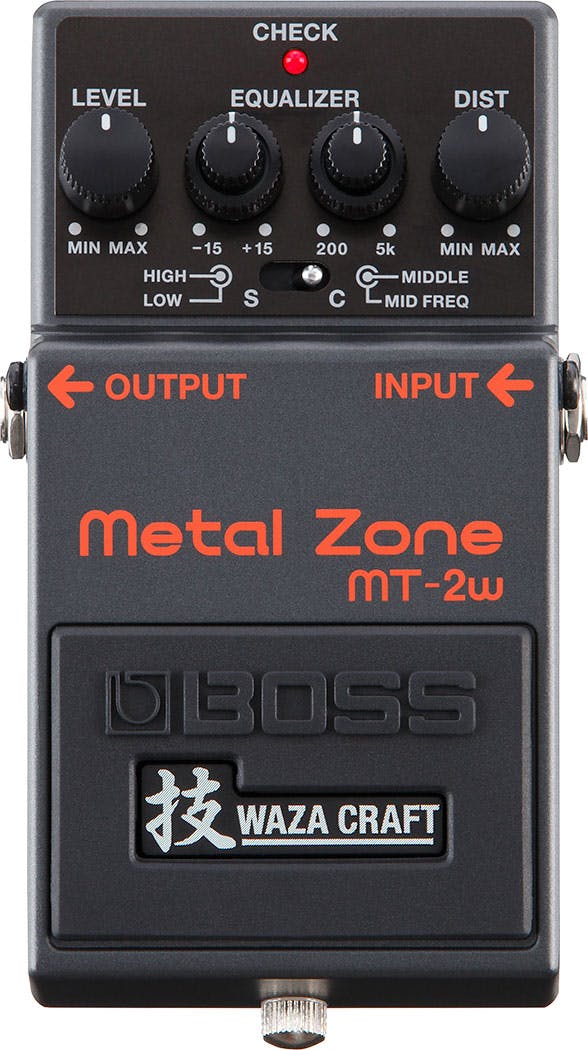Is the Boss Metal Zone any good?
Good question. We know metal isn’t for everyone, but hear us out. Yes, the Boss Metal Zone is a metal pedal aimed squarely at budding riffers and shredders, but there’s more going on behind the scenes than you may realise. So before you cast it aside as a wasp-in-a-can distortion stompbox, look a little deeper. Here are 5 reasons why we think the Metal Zone is so popular:
- It’s a versatile distortion pedal – honestly!
- It works well as a buffer
- It’s great for modding
- Famous players use it
- It’s sold almost 1 million units!
1: The Boss Metal Zone is a versatile distortion pedal – honestly!
Part of the reason for the MT-2’s infamy is its sound out of the box. We’ve all been there; the confusion when you first plug it in and wonder how you could have made such a decision. But have patience – all it takes is a little tweaking. So how do you get a good sound out of a Metal Zone?
Don’t crank the gain! While the Metal Zone is synonymous with high gain molten metal distortion, a little subtlety goes a long way. Cranking the gain control delivers an unnerving amount of fizz, at the cost of dynamics and note definition. Tweak the gain between 10 and 12 o’clock and you’ll retain a gnarly guitar tone but with your clarity intact. Go one step further and put it in your effects loop to unlock even more dynamic potential.
Don’t scoop the mids! While there’s no harm in jamming some classic Metallica or Pantera riffs, the days of mid-scooping are over. You have to learn to let go. If you want to find your own sound with the Metal Zone, embrace the mids. You’ll find that it suddenly plays nice with other pedals, and sounds way better in a mix – either recorded or live.
Spend some time with the EQ controls! Boss have always had a thing for powerful EQ. The Metal Zone is no exception. Using their handy double-knob configuration, two controls become four. This means you have a detailed 3-band EQ – low, high & mid (with a mid-frequency control from 200Hz to 5kHz). There’s a mighty 15dB of range on tap – try using the Metal Zone as a low-gain boost & EQ pedal!
How does the Boss Metal Zone compare to other high gain pedals? See below: Joss pits the Metal Zone against Wampler’s Dracarys distortion pedal – who comes out on top?





Responses & Questions